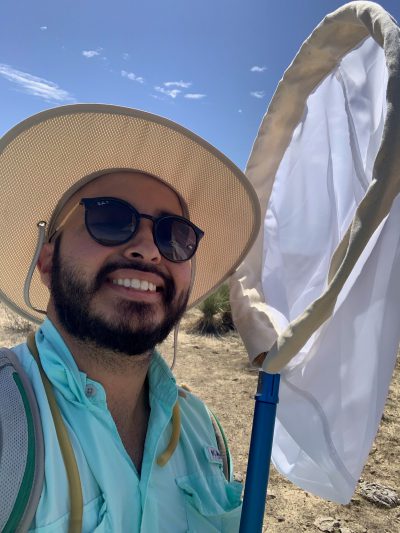Introduction
My name is Dr. Isaac Esquivel, and I wanted to introduce myself to y’all as the new field and forage crop entomologist at the NFREC in Quincy. I earned my B.S. degree in Entomology at the University of California Riverside, where I studied tomato psyllids on potatoes, tomatoes, and bell peppers and the bacterial disease they spread, Zebra Chip. I then received my Ph.D. in entomology at Texas A&M University, which focused on landscape effects on piercing-sucking bugs of cotton. Specifically, cotton fleahopper and verde plant bug, which are like the Lygus that we see here.
–
Brief research background
Most of the data used for my Ph.D. program were taken directly from producer farms in South Texas. The crop dynamic was a cotton/sorghum rotation with some field corn mixed in. My interests were working with producers on understating the spatial dynamics of pest populations within a field and how what was surrounding a particular field (i.e., another cotton field, sorghum, or semi-natural habitat) affected the population of that pest. The goal was to develop improved sampling plans and control strategies for these insects by seeing where populations were at/or above threshold levels in the field. We provided growers with pest monitoring maps for the fields we sampled within the day to allow a visual representation of their management programs for cotton, and sorghum pests.
Over multiple years, we found that populations of these pests seemed to be influenced by the semi-natural habitat surrounding fields. Pest populations were not only higher (usually at/above threshold levels) but tended to aggregate at the edge of the field (within 100 yards from the field boundary) that was next to semi-natural habitat compared to other crops. Our producer collaborators used this information to focus on these areas of the field for initial pest detection as well as spraying these areas of the field for control (a producer sprayed the edge of a cotton field a second time instead of the entire field). Information like this is highly valuable to save time and costs in scouting and controlling these pests, especially with pretty much EVERYTHING costing more in 2022.
–
Vision for future research in Florida
My plans for working in the Panhandle are to carry out a similar line of work in which we work directly with data from producer fields as well as research plots to get a sense of spatial variability in pest populations that we see in cotton, peanut, soybean, and other crops that can vary from year to year and field to field. I plan to work with folks from our neighboring states of Georgia and Alabama to improve pest management strategies for these pests in the Panhandle region.
I am looking forward to meeting with producers, working with extension agents, and seeing what we can bring you all to aid in management decisions in the near future.
- Cotton Pest Update: Stink Bugs and New Invasive Cotton Pest – Two-Spotted Cotton Leafhopper, Moving into Cotton - July 11, 2025
- Early Season Thrips Management in Cotton and Peanut 2025 - April 25, 2025
- ThryvOn Cotton in the Florida Panhandle – Summary of Trial Data at UF/IFAS NFREC Quincy - October 25, 2024

